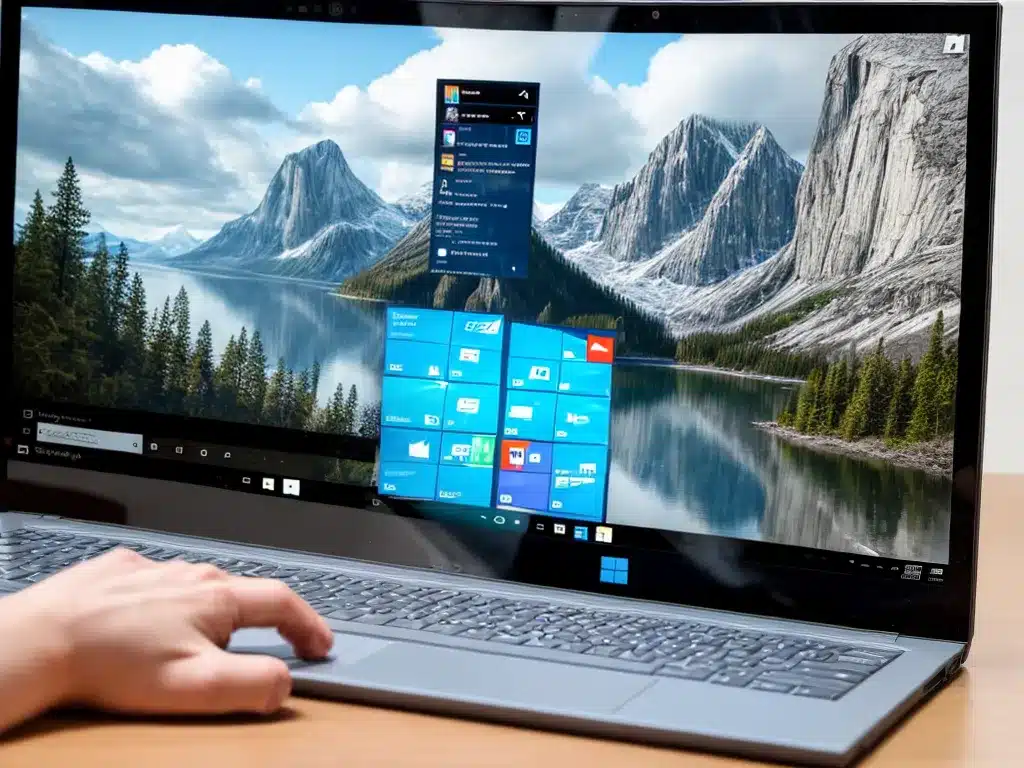
Introduction
Upgrading to Windows 11 can provide you with access to the latest features and improvements that Microsoft has included in their newest operating system. However, the rollout of Windows 11 has been gradual, meaning that not everyone has had the update presented to them yet. If you don’t want to wait and would like to upgrade right now, there are a few different methods you can use to install Windows 11 on your PC.
In this guide, I’ll cover the different ways you can upgrade to Windows 11 immediately, going over the pros and cons of each method. I’ll also provide step-by-step instructions to make the upgrade process smooth and easy. Let’s get started!
Check System Compatibility
Before attempting to upgrade, you’ll want to check if your system meets the minimum requirements to run Windows 11. Microsoft has specific hardware requirements in place and Windows 11 will not install unless these are met.
Here are the key compatibility requirements:
- Processor: 1GHz or faster, with at least 2 cores on a compatible 64-bit processor
- RAM: 4GB
- Storage: 64GB or larger storage device
- System firmware: UEFI, Secure Boot capable
- TPM: Trusted Platform Module (TPM) version 2.0
- Graphics card: Compatible with DirectX 12 or later with WDDM 2.0 driver
- Display: High definition (720p) display greater than 9” diagonally, 8 bits per color channel
You can download and run the PC Health Check app to quickly determine if your machine meets the requirements for Windows 11. Alternatively, you can check the system information in Settings or use a third party system information tool.
If your system does not meet the minimum requirements, you may not be able to install or run Windows 11. Upgrading hardware components like your processor, RAM, or TPM module may be necessary in that case.
Upgrade Method 1: Windows Update
The easiest way to upgrade to Windows 11 is to use the built-in Windows Update tool. Windows Update will automatically detect when your system is eligible for the Windows 11 upgrade and notify you.
Here is how to upgrade using Windows Update:
-
Go to Settings > Windows Update and check for updates.
-
If available, you’ll see the option to download and install the Windows 11 upgrade.
-
Review the information and select Download and install.
-
Once downloaded, the Windows 11 installation wizard will open. Follow the prompts to complete the installation.
-
Windows 11 will install like any feature update. Your files and apps will migrate automatically.
The benefit of using Windows Update is that it’s simple and straightforward. Windows handles the entire process automatically.
However, the downside is you have to wait until Microsoft rolls the upgrade out to your device specifically. If you want Windows 11 immediately, one of the other methods may be better.
Upgrade Method 2: Media Creation Tool
If Windows Update doesn’t show you the Windows 11 upgrade yet, you can use the Media Creation Tool from Microsoft to force the upgrade manually.
Here are the steps to use the Media Creation Tool to upgrade to Windows 11:
-
Go to Microsoft’s Software Download page on your Windows 10 PC.
-
Under the Create Windows 11 Installation Media header, select Download Now.
-
Open the MediaCreationToolxxxx.exe file once downloaded. Agree to the terms and select Upgrade this PC now.
-
The tool will download the Windows 11 installation files and launch the installer.
-
Follow the prompts to complete the upgrade process. Your files and apps will migrate automatically.
The Media Creation Tool allows you to upgrade even if Windows Update doesn’t show the Windows 11 option yet. The only catch is that your hardware must still meet the minimum requirements.
Upgrade Method 3: Clean Install
If you don’t mind wiping your PC and starting fresh, you can do a clean install of Windows 11 using installation media.
Here are the steps:
-
Follow the first 3 steps of the Media Creation Tool method above to download the Windows 11 installation files.
-
Before launching the installer, shut down your PC and boot into the BIOS.
-
In the BIOS, select your USB flash drive as the first boot device. This will boot your PC directly into the installer.
-
Follow the on-screen prompts to select your edition of Windows 11 and perform a clean installation.
The benefit of this method is you’re starting completely fresh. The downside is having to back up your files, reinstall apps, and reconfigure Windows.
I only recommend this if you want to wipe your PC anyway or are encountering issues upgrading through Windows Update or the Media Creation Tool.
Wrapping Up
Upgrading to Windows 11 is easy once you know the proper method for your situation. In most cases, using Windows Update is the simplest option. But if you want to upgrade right now, the Media Creation Tool allows you to skip the wait. And you always have the clean install route available too.
The main hurdle is simply ensuring your PC’s hardware meets the Windows 11 system requirements. As long as it does, you should have no problem installing the new OS. Enjoy the latest features and interface Windows 11 provides! Let me know if you have any other questions.












